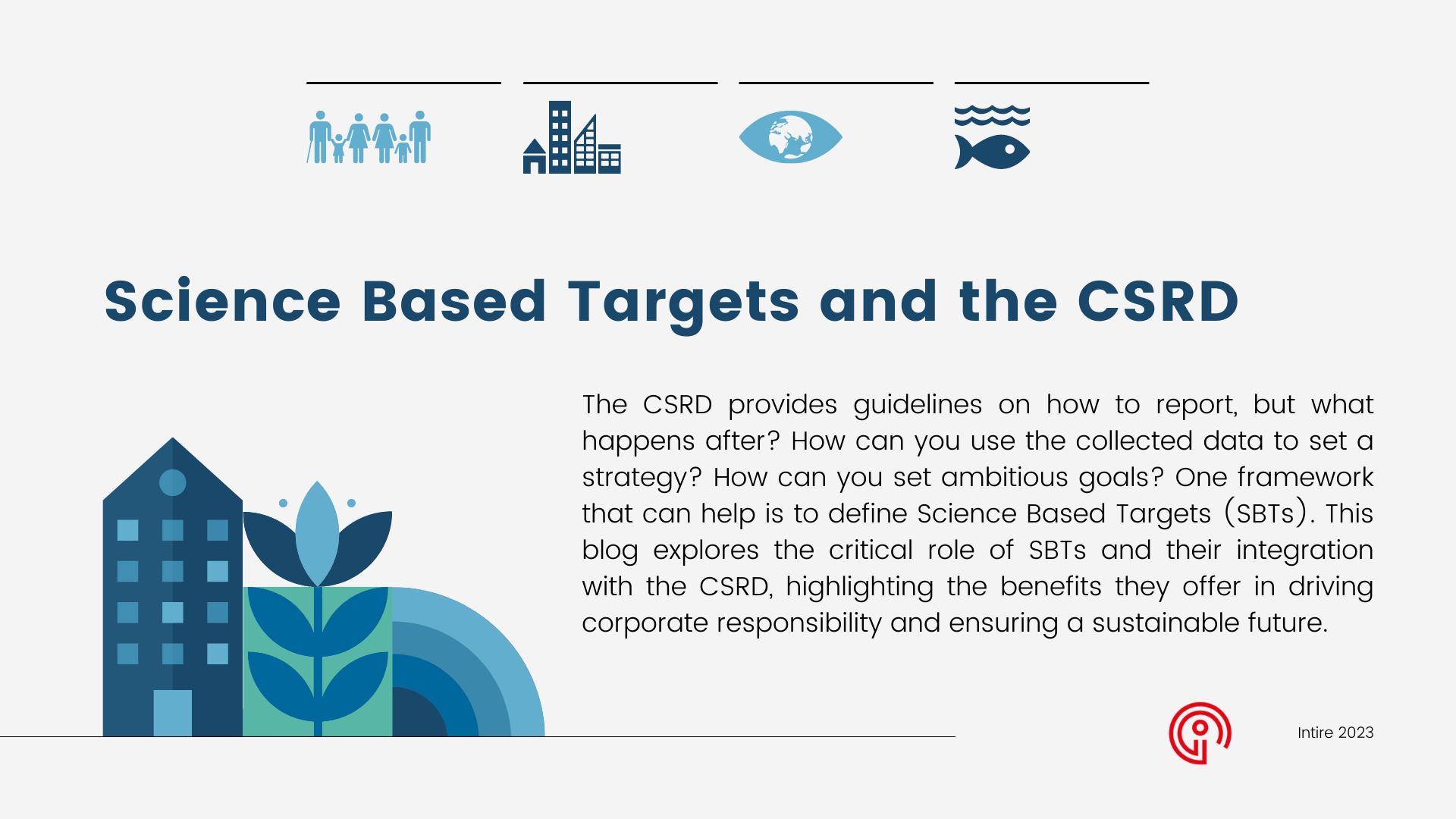In today’s rapidly evolving world, where environmental concerns are at the forefront, businesses are expected to address their impact on the planet. We have previously talked about the CSRD in multiple blogs, here. The CSRD provides guidelines on how to report, but what happens after? How can you transform the collected data to a strategy? How can you set ambitious goals? One framework that can help is Science Based Targets (SBTs). This blog explores the critical role of SBTs and their integration with the CSRD, highlighting the benefits they offer in driving corporate responsibility and ensuring a sustainable future.
Science-Based Targets: setting the foundation
Science-Based Targets (SBT’s) provide businesses with a roadmap to align their greenhouse gas (GHG) emissions reduction goals according to the Paris Agreement. Unlike traditional arbitrary targets, SBTs are based on scientific evidence, aiming to limit global warming to well below 2 degrees Celsius above pre-industrial levels and limiting it to 1.5 degrees. SBTs include not only direct emissions but also indirect emissions across the value chain. By adopting SBTs, companies contribute to mitigating climate change, enhancing resilience, and safeguarding the planet for future generations. Once you have set the targets for your business, they can be officially approved by the Science Based Targets initiative (SBTi).
The CSRD: enhancing transparency and accountability
The Corporate Sustainability Reporting Directive (CSRD) is a regulatory framework proposed by the European Union to strengthen sustainability reporting standards. It aims to enhance transparency, comparability, and reliability of corporate sustainability disclosures. CSRD requires large companies and certain public-interest entities to disclose information on their ESG impacts in their annual reports. Not sure what CSRD entails and what it can do for your business? Read our previous blog series on how to start with sustainability reporting here.
Combining SBTs and CSRD
When combined, Science-Based Targets and the CSRD create a powerful synergy that drives meaningful change and promotes sustainable development. SBTs serve as a cornerstone for companies to establish ambitious emission reduction goals. While the CSRD provides a structured reporting framework to communicate progress and demonstrate accountability.
By aligning with SBTs, businesses show their commitment to adopting science-driven solutions and reducing their carbon footprint. This not only helps reducing the negative impacts of climate change, but it also enhances their reputation. It attracts environmentally conscious investors, and strengthens stakeholder relationships. Integrating SBTs into CSRD reporting enables companies to demonstrate the tangible steps taken towards their emissions reduction targets. It fosters transparency, allowing stakeholders to assess performance and measure impact and identify areas for improvement. Through comprehensive reporting, companies can highlight their efforts in sustainability and provide stakeholders with a clear understanding of their environmental impact.
The integration of Science-Based Targets with the CSRD presents an opportunity for businesses to lead the way in sustainable practices. By setting science-driven emission’s reduction targets and complying to reporting standards, companies contribute to mitigating climate change. Fostering innovation, and building trust with stakeholders. As sustainability becomes increasingly crucial for long-term success, embracing the synergy between SBTs and the CSRD paves the way for a more sustainable and resilient future.
Interested in how to set up science based targets for your organization? Don’t hesitate to contact us!





they can be officially approved by the Science Based Targets initiative (SBTi)? Regard Telkom University